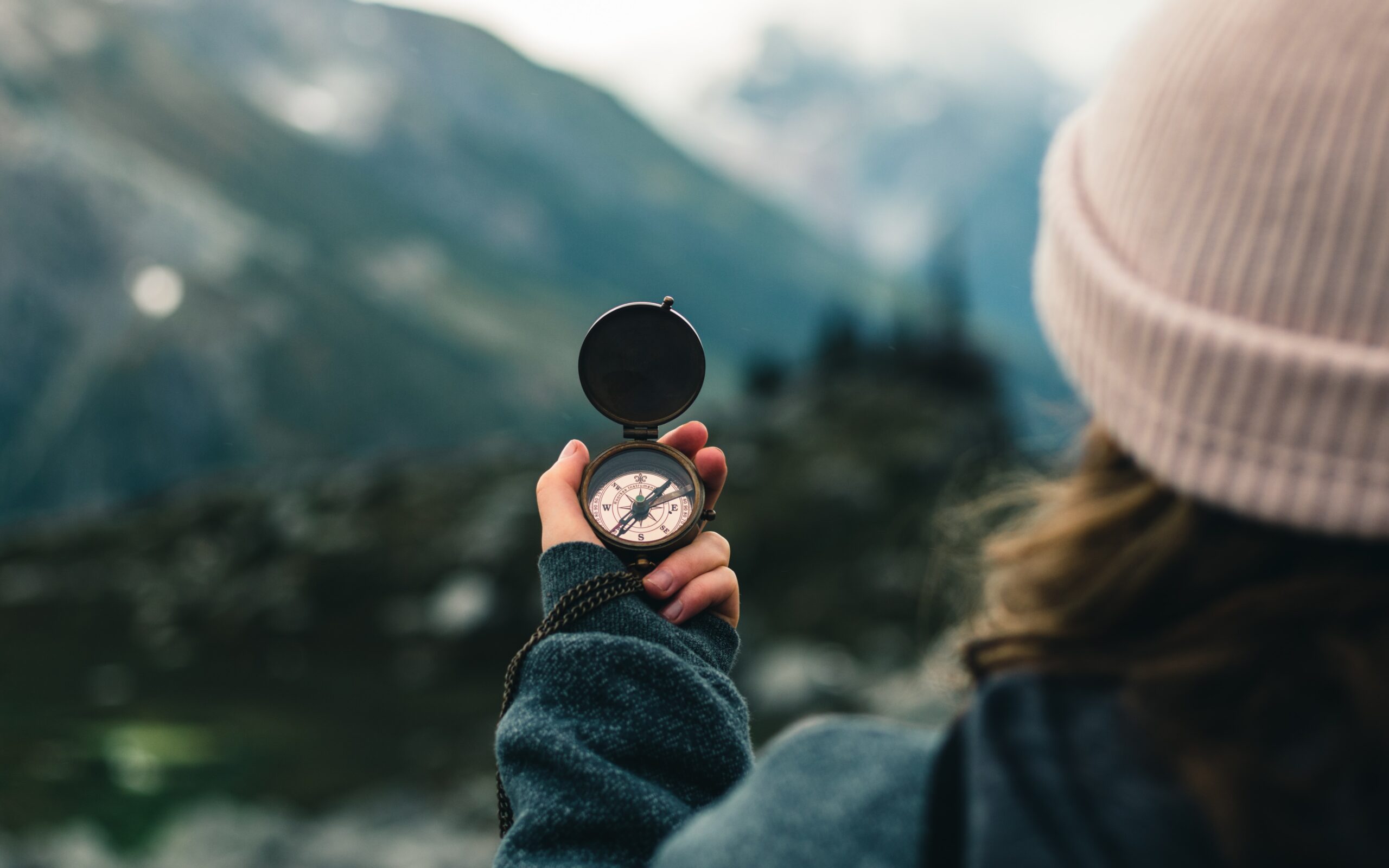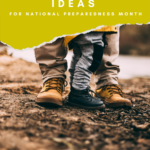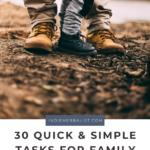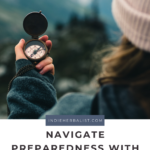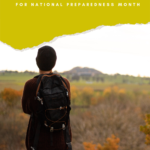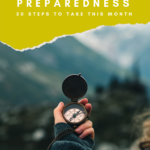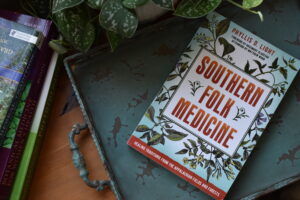Links contained in this post and elsewhere on my website may include affiliate links. When you make a purchase through these links, I earn a commission at no additional cost to you. I only link to products and services that I love - and that I think you will love, too!
It’s September, friends! That means it’s National Preparedness Month. Every year in September I take a few minutes every day to review my evacuation plans and emergency kits. I also brush up on skills and take time to master new ones.
This year, I’m taking everyone along with me as I go through my checklists and explain what I do and why. Today I will share 30 simple things you can do over the month to get a little more prepared each day.
Easy things to do for National Preparedness Month
The following tasks should only take you a few minutes each day. I’ve organized everything into the categories of personal items, water, food, first-aid, and vehicle readiness. Let’s get started! Some of the tasks involve buying inexpensive items at the store, but most can be done by gathering extra items you may have on hand.
Personal items for emergency preparedness
1. Use items you have around the house to pack a change of clothes and extra toiletries in a backpack, tote, or luggage to use as your emergency evacuation kit. Do this for each family member.
2. Create a Grab-n-Go emergency binder by adding copies of your important documents to a three-ring binder or waterproof, fireproof documents bag. Lisa Bedford has a checklist and instructions for making an emergency binder on her blog.
3. Think about what sanity savers you would like to have in an emergency and add them to your evacuation kit. Consider things that are small, portable, and don’t need batteries. A deck of cards, a puzzle book, or travel games are some examples. For kids, a coloring book and crayons, fidget items, and small toys are great ideas.
4. Add an extra charger for your phone and a small flashlight to your kit.
5. Talk to your doctor about getting an extra month of your prescription medications to keep in your evacuation supplies. When it’s time to refill, always rotate the fresh ones into your kit so they don’t expire.
Tip: I used an online eyewear company to purchase an inexpensive pair of prescription glasses as a backup for my kit, and they only cost $12. If you wear glasses, this is a neat hack to know. I also keep a comfort kit of my favorite herbal things in my evacuation kit. You can explore my herbal comfort kit here.
6. Don’t forget your pets! Gather extra supplies you have and create an evacuation kit for them. Make a list of anything else you will need so you can go shopping.
Tip: I bought a backpack for all of my dog’s supplies. It stays on top of his crate and holds his heartworm meds, nail trimmers, bath wipes, calming chews, pick-up bags, and an extra leash and collar. I use ziploc bags to measure out three days of kibble. His vet info and rabies tag are also in the bag. It’s great for when we travel, too!
Easy water preparedness tasks
7. Make sure you have enough water on hand for three days. A gallon of water costs around $1 at most big box stores, so this is really quick and affordable.
Tip: The most basic recommendation is one gallon per person, per day. This is only enough for normal, daily drinking. If you live in a very hot climate, I suggest more so you have extra to stay hydrated from sweating, and to use in a spray fan or wet a bandana to help avoid heat stroke. You should also store more if you plan to use water to take sponge baths.
8. Learn how to use bleach to make water safe to drink. Make sure you have a small bottle of plain bleach on hand and a dropper for measuring.
Tip: Print or hand copy these directions from the EPA on how to safely purify drinking water.
9. Add extra bottled water to your preps and your favorite powdered drink mixes.
10. Add hand sanitizer and some baby wipes/bath wipes to your kit so your water supplies will go farther.
11. Learn about water filters to add to your evacuation kit and order one online or go to an outdoor supply store to look at them in person. I keep a Lifestraw water bottle in my evacuation kit, and we have a Lifestraw water pitcher in the kitchen. These are both great for boil water advisories at home or when traveling.
12. Learn how to make an oral rehydration solution with salt and sugar, or buy some packets to add to your first aid kit. This is important for staying hydrated during a heatwave and if someone is ill with a fever, vomiting, or diarrhea.
Simple food tasks for National Preparedness Month
13. Plan three days of no-heat meals and add them to your pantry. If you aren’t sure where to start, Consumer Reports has recipes and food safety tips here.
Tip: Buy a plastic tub to store your no- heat meals for portability during an evacuation. This also keeps things organized during a power outage! I include things like packets of protein powder and individual serving-size juices or milk to make protein shakes, packets of tuna and crackers, fruit cups, puffed veggie snacks, trail mix, almond butter packets, jerky, and protein bars. I also include a few no-heat freeze-dried camping meals- just add water and let them sit for 15 minutes before eating.
14. Plan out two weeks’ worth of storable meals for sheltering in place when you have access to a stove or microwave.
Tip: I like using freeze-dried meals designed for backpacking for this. Several companies make gluten, dairy-free, and other allergen-friendly options. They have a long shelf life and are more nutritious (and better tasting) than the “preparedness buckets” available on the market. Store enough water to cook them (most will need 1-2 cups of water to rehydrate).
15. Add a stash of your favorite protein bars and travel snacks to your personal evacuation kit, and do the same for your family members.
16. Make sure you have a stash of your favorite sick-day foods so you won’t need to run to the store when you feel under the weather. For instance, canned or boxed soups, crackers, pudding, and ginger ale are examples to get you started.
17. Consider your pet’s food supplies. Add an extra bag of kibble and some treats to your supplies.
18. If you have children, elderly family members, or family with special sensory needs, make sure your emergency food supplies include items that they like and are easy for them to eat. It’s a good idea to test any new foods you plan to use in your preps to make sure they won’t refuse to eat them.
National Preparedness Month first aid supply check
19. Gather up your first aid supplies and take stock. Make sure you have a tube of triple-antibiotic ointment, assorted sizes of bandaids, and some hydrogen peroxide for cleaning up cuts and scrapes.
20. Print a list of first aid supplies and find or buy a bag to make your own first aid kit. This makes your first aid kit easy to grab and go. It also makes your money go much farther than buying a first aid kit off the shelf, and you will have more to work with when you need it.
Tip: The Red Cross has a good list for building your kit.
21. Refresh your memory on CPR and first aid skills. If you haven’t ever taken a Red Cross course, consider taking one to learn basic first aid situations and how to handle them.
Tip: If you know basic first aid already, consider learning Wilderness First Aid skills.
22. Pet first aid is a little different than human first aid. The Red Cross provides an affordable online course for pet owners and has an app you can download for your phone. Make sure you have pet-specific first aid supplies available too.
23. Read this article by the CDC to learn about setting up a sick room. Decide which room will be your designated sick room and stock it with extra tissues, hand sanitizer, and a trashcan with liners.
24. Add a package of face masks, hand sanitizer, and lip balm or chapstick to your evacuation kits.
Vehicle checklist for National Preparedness Month
25. Do you need an oil change? Are your brakes getting worn? Will you need new tires soon? Schedule maintenance for your car now or begin budgeting to do so as soon as possible.
26. Begin gathering supplies for a car emergency kit. A tire pump, a blanket, an extra gallon of water, and a small first aid kit are good ideas. Use what you have on hand if you have a tight budget and don’t want to buy new items right now.
27. Plan 3 evacuation routes to leave the state in the event of a natural disaster. Deciding where you will go and how you will get there ahead of time is important. Buy a state map for your state and consider buying a national road atlas, too. If you are trying to evacuate without cell phone service, or if major roads are compromised, then paper road maps will be essential.
28. Of course, part of vehicle safety is all about driving skills. Review the information at Ready.gov about driving safely in potentially hazardous conditions.
29. During an evacuation for a natural disaster, getting packed and on your way as quickly as possible is important. Practice packing and unpacking your car a few times this month so you can troubleshoot. When you find a process that works for you, make a checklist you can refer to during an actual evacuation and store it in your emergency binder.
30. If you don’t own a car, plan how you will evacuate if it becomes necessary. Check with friends or family about whether you can help pay for gas in exchange for evacuating with them, or make other arrangements. Public transportation may not be available during an emergency, so be sure to have more than one plan available.
Resources for National Preparedness Month
Be sure to check out ready.gov for helpful videos and checklists.
My friend Lisa Bedford runs a blog completely dedicated to family preparedness. Her must-read handbook, The Survival Mom, is a wonderful reference full of checklists and advice for new and experienced preppers.
Here is a list of all the herbal preparedness and first aid articles here on Indie Herbalist so you can bookmark them for later!
